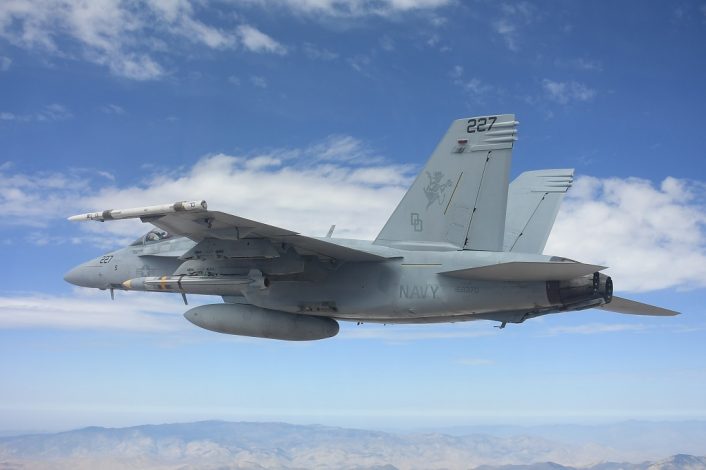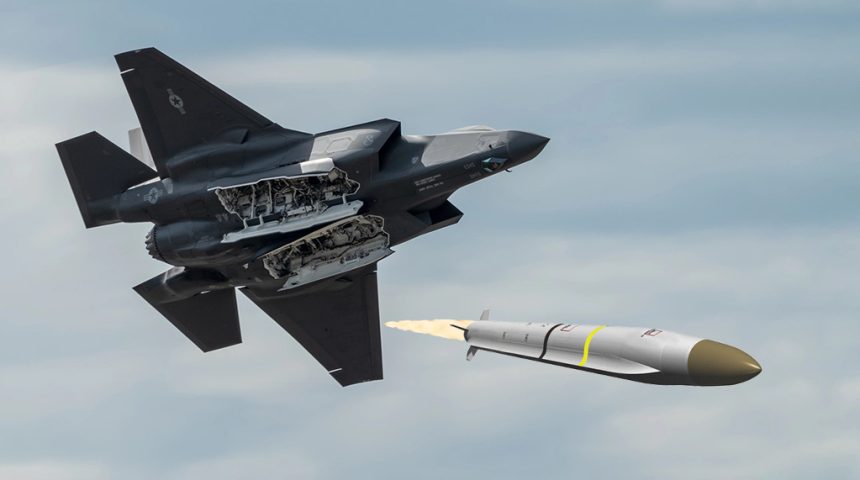The U.S. Air Force has selected the company to develop and test SiAW, the new advanced, high-speed, air-to-ground weapon for anti-access/area denial environments.
The U.S. Air Force has awarded Northrop Grumman an approximately $705 million contract to deliver the Stand-in Attack Weapon (SiAW), a new generation air-to-ground weapon that will be carried internally by the F-35A. SiAW will provide strike capability to defeat rapidly relocatable targets as part of an enemy’s anti-access/area denial environment.
Northrop Grumman says SiAW leverages the company’s weapons systems design, development and production expertise to deliver on the Air Force’s digital engineering priorities and accelerate capability for the warfighter. During the next 36 months, the company will further develop the weapon, conduct platform integration and complete the flight test program for rapid prototyping in preparation for rapid fielding.
“Northrop Grumman’s SiAW delivers on the Air Force’s desire for its first digital weapons acquisition and development program,” says Susan Bruce, vice president of advanced weapons at Northrop Grumman. “With our expert digital engineering capabilities, this next-generation missile represents an adaptable, affordable way for the Department of Defense to buy and modernize weapons.”
The SiAW program previously awarded contracts last year to Northrop, Lockheed Martin and L3Harris, and then this year two contracts to Lockheed Martin and Northrop Grumman for the final stage of the weapon’s first phase. Phase 2 development is a continuation of the Air Force requirement for this first-of-its-kind Middle Tier Acquisition large weapon program focused on digital engineering, Weapon Open System Architecture and agility.

Phase 2 consists of two primary increments: Phase 2.1, which concludes with a guided vehicle flight test, and Phase 2.2, which concludes with three additional flight tests and the delivery of SiAW leave-behind prototype missiles and test assets. Once this phase is completed, the program is expected to transition to a major capability acquisition before being fielded on the F-35A Lightning II and possibly on the B-21 Raider stealth bomber.
The Air Force is targeting an initial operational capability by 2026, with plans to buy 400 of the missiles by 2028 and eventually up to 3,000 in the following years. In the meanwhile, the service will get the Advanced Anti-Radiation Guided Missile-Extended Range (AARGM-ER), currently in an advanced development phase with the U.S. Navy, as an interim capability.
The SiAW builds on the AARGM-ER but, while they appear identical externally, SiAW is an all-new weapon. Compared to the AARGM-ER, SiAW will be used against a broader range of anti-access/area denial (A2/AD) targets beyond air defense radars, such as command-and-control sites, ballistic missile and cruise missile launchers, GPS jamming systems, anti-satellite systems, other high-value or fleeting targets.
The SiAW is expected to be faster than both the current AGM-88 HARM and future AARGM-ER and with a greater, yet unspecified, range. The weapon is expected to have multiple sensors and high-resolution GPS guidance, in addition to open architecture interfaces. This will allow for rapid subsystem upgrades to field enhanced capabilities, by using also modular elements that can be swapped rapidly.









